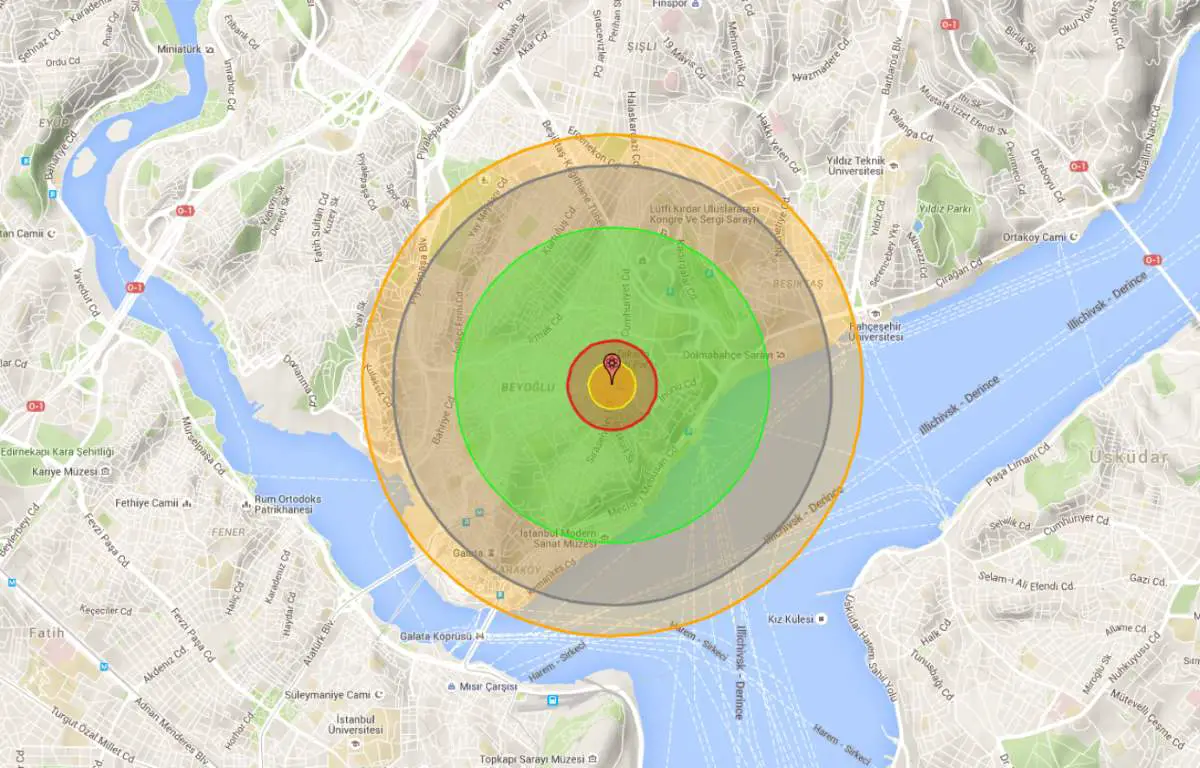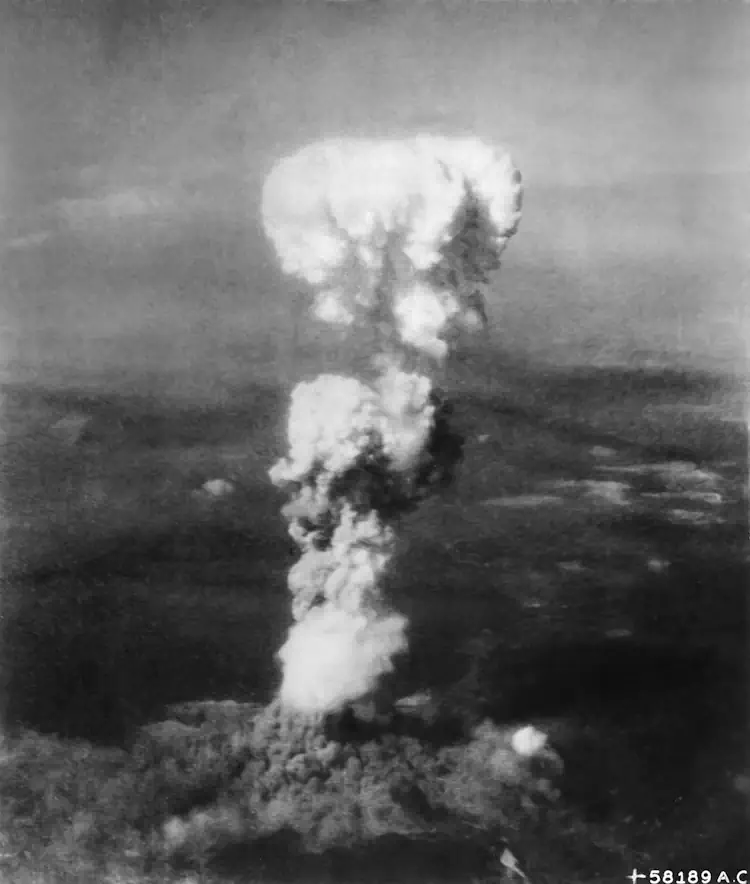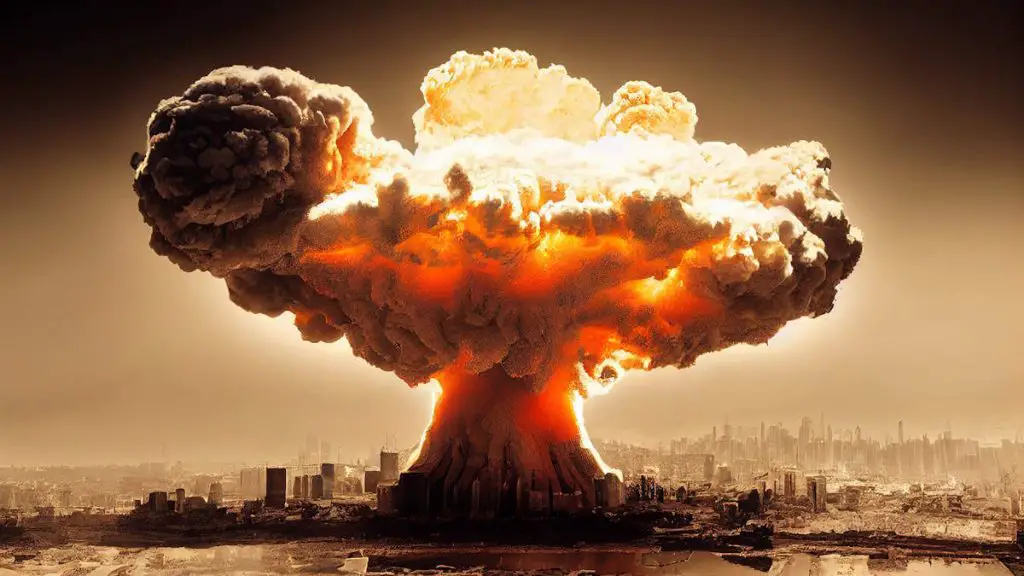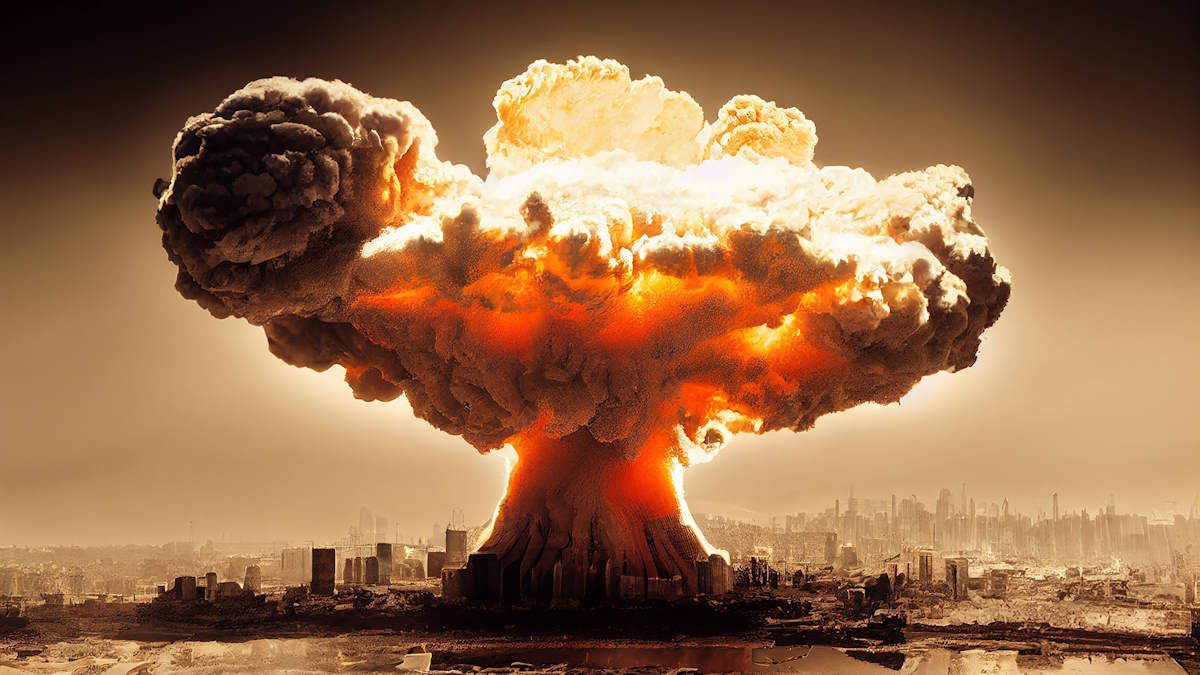Have you ever wondered, what if a nuclear bomb hits your own city? In an age of heightened global tensions, the possibility of a nuclear strike may seem like a grim reality. However, thanks to technological advancements, we can now gain a virtual glimpse into the devastating consequences of such an event. NukeMap, a powerful online tool, allows users to simulate the effects of a nuclear explosion in their own city. By inputting specific parameters, one can visualize the extent of destruction, casualties, and long-term effects. Discover the chilling realities of a nuclear bomb strike by harnessing the power of NukeMap.
What if a nuclear bomb hits your city? NukeMap can show that

In the image above:
- Yellow circle: Fireball radius. Maximum size of the nuclear fireball; relevance to lived effects depends on the height of detonation.
- Red circle: Air blast radius (20 psi). Heavily built concrete buildings are severely damaged or demolished; fatalities approach 100%.
- Green circle: Radiation radius (500 rem). Without medical treatment, there can be expected between 50% and 90% mortality from acute effects alone. Dying takes between several hours and several weeks.
- Gray circle: Air blast radius (5 psi). Most residential buildings collapse, injuries are universal, and fatalities are widespread.
- Orange circle: Thermal radiation radius (3rd-degree burns). Third-degree burns extend throughout the layers of skin and are often painless because they destroy the pain nerves. They can cause severe scarring or disablement and can require amputation. The 100% probability for 3rd-degree burns at this yield is 8.7 cal/cm2.
I hope it never occurs but have you ever wondered, what if a nuclear bomb hits your own city? I did many times. Nuclear historian Alex Wellerstein of Stevens Institute of Technology created a web-based simulator named “NukeMap” which allows you to visualize the destruction of an atomic bomb dropped in your city (or any city in the world).
To play with “NukeMap”, click/tap on this link.
Maybe a nuclear war is not a big threat as it was in the Cold War years, but it is still possible. A crazy leader or two, a big economic crisis, petroleum wars, war over natural resources, terrorism… can trigger a big war (the third world war?) and in this case, nobody can guarantee that the nuclear weapons won’t be used any longer.
Real nuclear bombs
On August 6, 1945, during World War II, an American Boeing B-29 Superfortress bomber named “Enola Gay” dropped the world’s first deployed atomic bomb codenamed “Little Boy” over the Japanese city of Hiroshima. The nuclear bomb exploded with 15 kilotons of TNT (63 TJ) of energy and caused horrendous destruction to the city.
Approximately 66,000 people were killed as a direct result of the blast, and 69,000 were injured to varying degrees. Within four months, the number of fatalities would reach 90,000-146,000 people due to the acute effects of the atomic bomb.

Just three days later, on August 9, the United States dropped another bomb codenamed “Fat Man” on the city of Nagasaki. Fat Man was a plutonium implosion-type atomic bomb and it was a little stronger: 20 kilotons of TNT (84 TJ). It killed 39,000-80,000 people in Nagasaki within four months.
Little Boy was less powerful than the Fat Man, but the damage and the number of victims at Hiroshima were much higher, as Hiroshima was on flat terrain, while the hypocenter of Nagasaki lay in a small valley.
These two bombings remain the only use of nuclear weapons for warfare in history.
The Tsar Bomba: the most powerful nuclear bomb ever detonated
You can enter the bomb’s yield (in kilotons), or select different predefined atomic bombs; including the Little Boy, Fat Man, and the Tsar Bomba, a hydrogen bomb, the most powerful nuclear weapon ever detonated. Its test on October 30, 1961, remains the most powerful human-made explosion in human history.
Developed by the Soviet Union, the Tsar Bomba had a yield of 50 megatons TNT (210 PJ). In theory, the bomb had a maximum yield of 100 megatons, but because only one bomb was built, this theory was never demonstrated. You can also use this 100 megatons theoretical version in the application.
You can also select the “airburst” or the “surface” detonations. Airburst causes more damage. Little Boy was an airburst 580 meters (1,900 ft) above the ground because calculations showed that for the largest destructive effect, the “Little Boy” should explode at that altitude.
I am also shocked that how powerful the Tsar Bomba is. It is horrible, horrible! If it was dropped in a big city, nobody could survive. Not one! We must do anything to prevent a nuclear war in the future.

Sources
- Atomic bombings of Hiroshima and Nagasaki on Wikipedia
- Little Boy on Wikipedia
- Fat Man on Wikipedia
- Tsar Bomba on Wikipedia
- Space Shuttle Endeavour’s Touchdown Meets Columbia’s Salute [An amazing photo from the past] - February 29, 2024
- Moon Landings: All-Time List [1966-2024] - February 23, 2024
- From Orbit to Ordinary: 10 Earthly Applications of Space Technology - January 23, 2024
